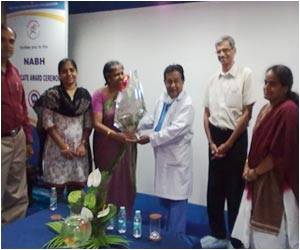
"Our study has a broad implication because the six-membered ring is a common structural feature found in hundreds of drug molecules produced by nature," said the study's principal investigator, Chu-Young Kim of the National University of Singapore. "We have actually analyzed the genes of six other organisms that produce similar drugs and we are now confident that the chemical mechanism we have uncovered applies to these other organisms as well."
According to "Baldwin's Rules for Ring Closure," which govern the way these rings form, this compound should contain a five-membered ring instead of the observed six-membered ring.
The solution to the molecular mystery depended in large part on a deeper understanding of the unique protein Lsd19, the catalyst that enables the formation of lasalocid's rings. To determine the protein's atomic structure, the researchers hit frozen crystals of Lsd19 with X-rays from SLAC's Stanford Synchrotron Radiation Lightsource and observed how the crystals diffracted the X-rays passing through. "You need atomic-level detail of the crystal's structure to understand what's really happening," said co-author Irimpan Mathews, a staff scientist at SLAC.
Source-Eurekalert












